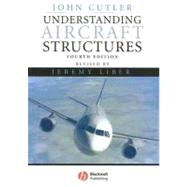
What is included with this book?
Jeremy Liber, who has been responsible for revising the Fourth Edition, has worked in the fixed and rotary wing aircraft industry for a number of years as a stressman, structural test engineer and design engineer. He has degrees in both engineering and business plus a pilot’s licence. He is a Member of the Royal Aeronautical Society and is currently Technical Director at Britten-Norman Aircraft Ltd.
| Preface | ix | ||||
| Chapter 1 Introduction | 1 | (2) | |||
| Chapter 2 History | 3 | (26) | |||
|
3 | (1) | |||
|
4 | (5) | |||
|
9 | (5) | |||
|
14 | (1) | |||
|
15 | (14) | |||
| Chapter 3 Parts of the Aircraft | 29 | (9) | |||
|
29 | (2) | |||
|
31 | (1) | |||
|
32 | (1) | |||
|
32 | (5) | |||
|
37 | (1) | |||
| Chapter 4 Loads on the Aircraft | 38 | (19) | |||
|
38 | (6) | |||
|
44 | (4) | |||
|
48 | (2) | |||
|
50 | (1) | |||
|
51 | (2) | |||
|
53 | (2) | |||
|
55 | (1) | |||
|
56 | (1) | |||
| Chapter 5 The Form of Structures | 57 | (32) | |||
|
57 | (1) | |||
|
57 | (2) | |||
|
59 | (1) | |||
|
59 | (4) | |||
|
63 | (9) | |||
|
72 | (13) | |||
|
85 | (2) | |||
|
87 | (1) | |||
|
87 | (1) | |||
|
88 | (1) | |||
| Chapter 6 Materials | 89 | (23) | |||
|
89 | (3) | |||
|
92 | (9) | |||
|
101 | (2) | |||
|
103 | (2) | |||
|
105 | (1) | |||
|
106 | (3) | |||
|
109 | (1) | |||
|
110 | (2) | |||
| Chapter 7 Processes | 112 | (12) | |||
|
112 | (1) | |||
|
112 | (7) | |||
|
119 | (4) | |||
|
123 | (1) | |||
|
123 | (1) | |||
| Chapter 8 Corrosion and Protective Treatments | 124 | (9) | |||
|
124 | (2) | |||
|
126 | (2) | |||
|
128 | (4) | |||
|
132 | (1) | |||
|
132 | (1) | |||
| Chapter 9 Detail Design | 133 | (26) | |||
|
133 | (3) | |||
|
136 | (3) | |||
|
139 | (5) | |||
|
144 | (8) | |||
|
152 | (2) | |||
|
154 | (1) | |||
|
155 | (1) | |||
|
156 | (1) | |||
|
157 | (1) | |||
|
157 | (2) | |||
| Chapter 10 Composite Materials in Aircraft Structures | 159 | (14) | |||
|
159 | (2) | |||
|
161 | (1) | |||
|
162 | (2) | |||
|
164 | (3) | |||
|
167 | (2) | |||
|
169 | (2) | |||
|
171 | (1) | |||
|
172 | (1) | |||
| Chapter 11 Quality and Airworthiness | 173 | (9) | |||
|
173 | (1) | |||
|
174 | (1) | |||
|
175 | (2) | |||
|
177 | (2) | |||
|
179 | (1) | |||
|
180 | (1) | |||
|
181 | (1) | |||
|
181 | (1) | |||
| Chapter 12 Stressing | 182 | (13) | |||
|
182 | (1) | |||
|
183 | (4) | |||
|
187 | (3) | |||
|
190 | (3) | |||
|
193 | (1) | |||
|
194 | (1) | |||
| Chapter 13 Presentation of Modifications and Repairs | 195 | (8) | |||
|
195 | (2) | |||
|
197 | (4) | |||
|
201 | (1) | |||
|
201 | (1) | |||
|
202 | (1) | |||
| Appendices | 203 | (6) | |||
| Index | 209 |
The New copy of this book will include any supplemental materials advertised. Please check the title of the book to determine if it should include any access cards, study guides, lab manuals, CDs, etc.
The Used, Rental and eBook copies of this book are not guaranteed to include any supplemental materials. Typically, only the book itself is included. This is true even if the title states it includes any access cards, study guides, lab manuals, CDs, etc.